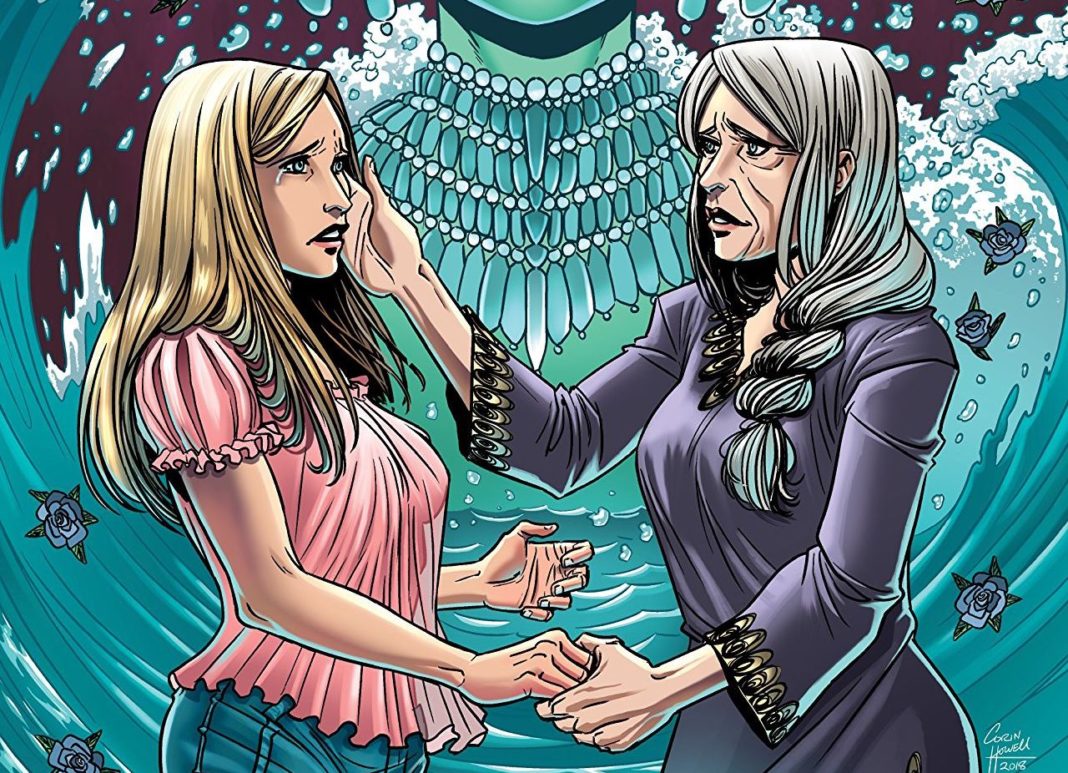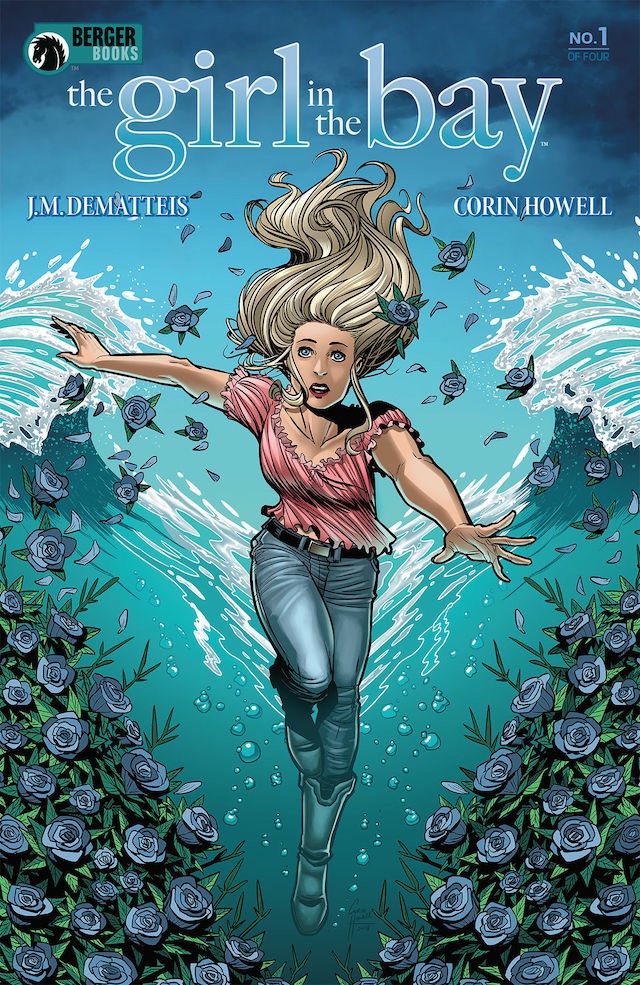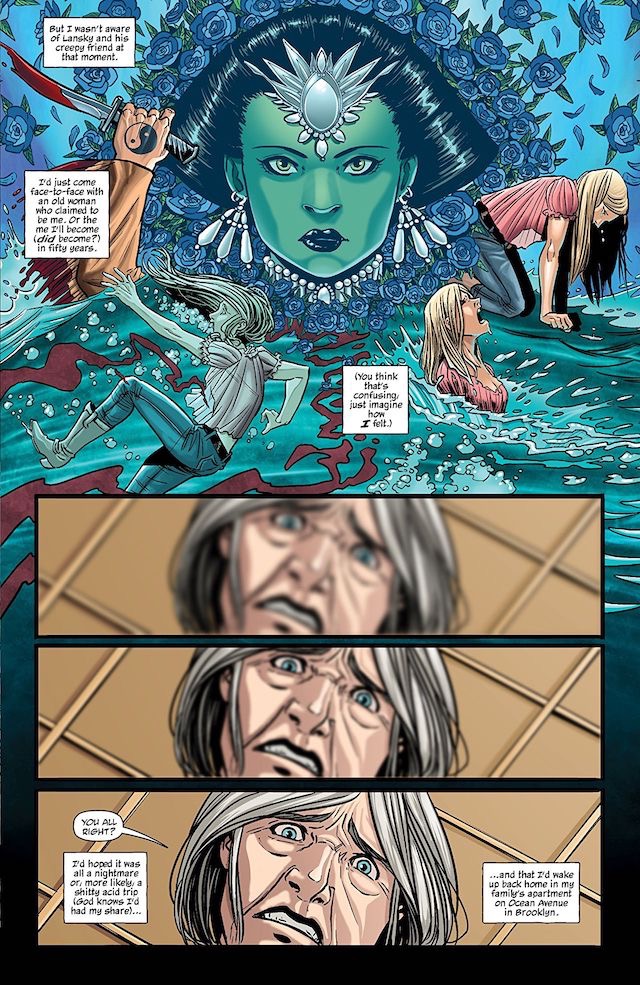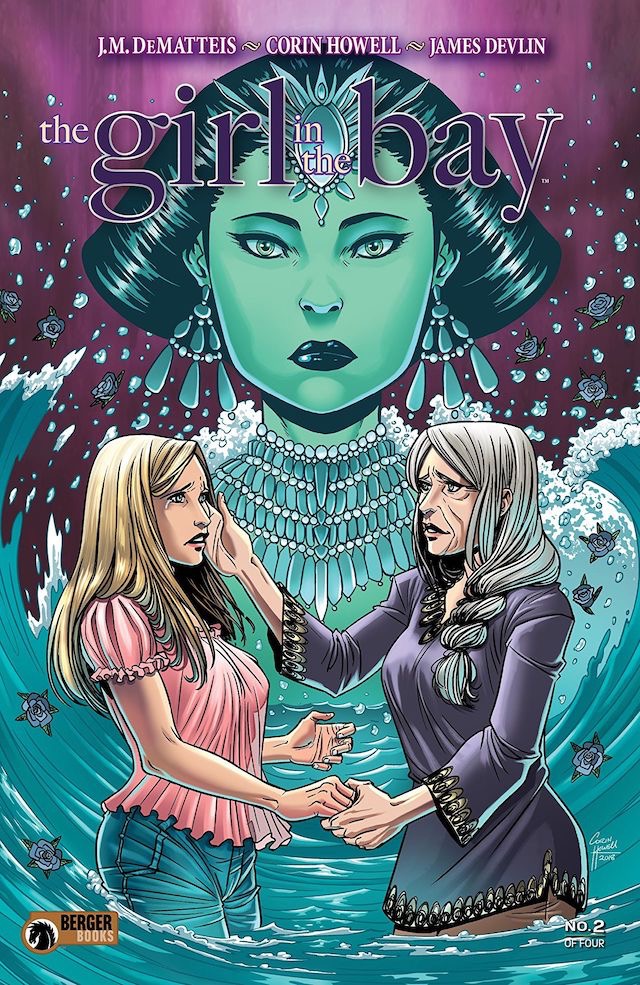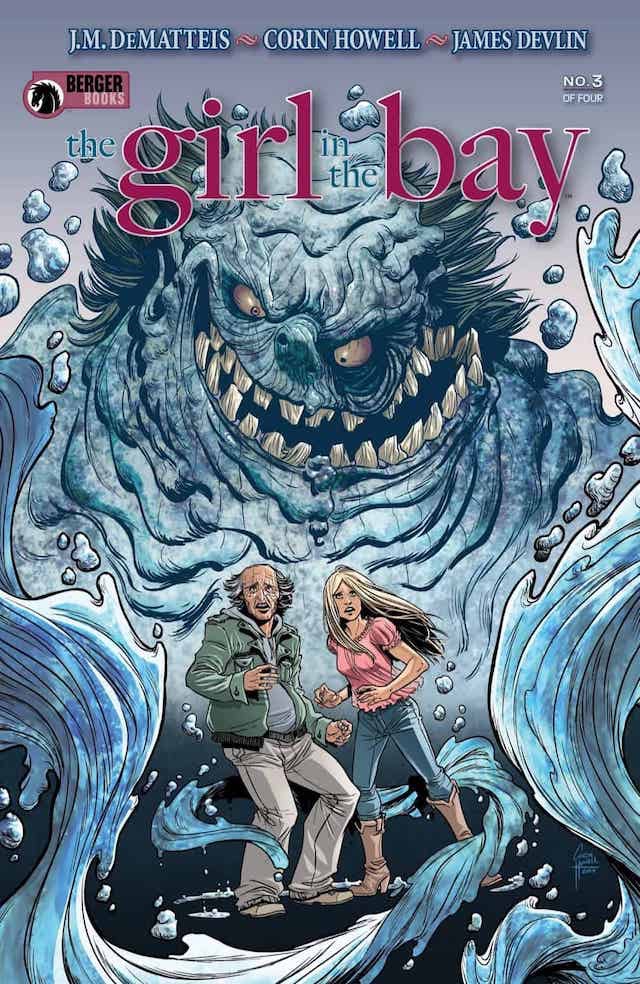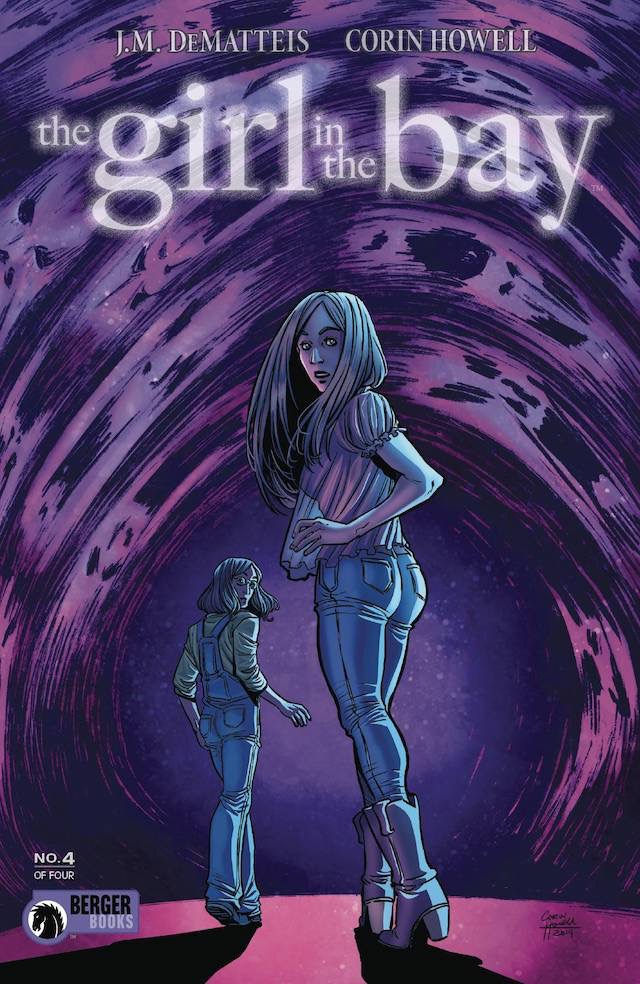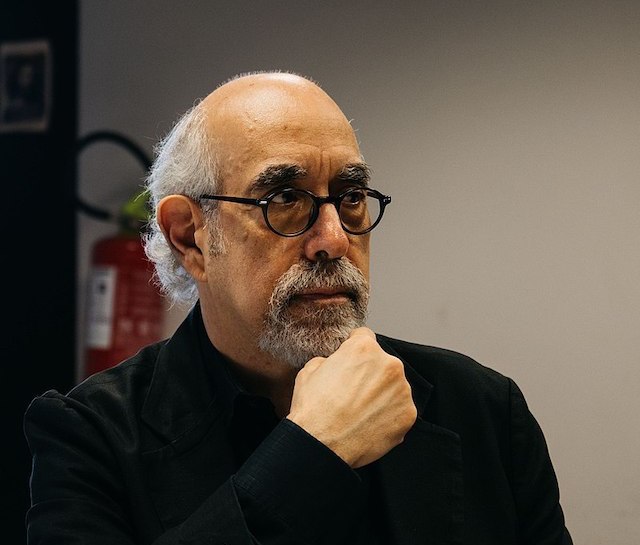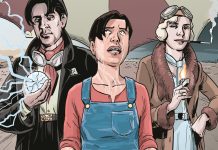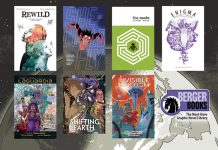J.M. DeMatteis has been making comics for 30 years, and reading his new series from Berger Books it’s easy to see why. In The Girl in the Bay, DeMatteis pens an engaging, ethereal miniseries from Berger Books merges music, magic, and beautiful lifework from newcomer Corin Howell to wonderful results. I was extremely pleased when Marc took the time to answer my burning questions about the inspiration for Girl in the Bay, how he develops a story, and working with Karen Berger again. Learn about all of that and more below.
All art by Corin Howell and James Devlin
Telling a story about a character meeting an older version of herself must lead to a lot of reflection, comparing who you are to who you were. What came of that reflection, beyond the comic itself?
It’s not so much that telling the story leads to reflection, it’s that reflection leads to telling the story. I’ve always been acutely aware of the alarming speed with which time passes…and, with it, our lives. Various mystical traditions talk about the world being an illusion, a cosmic dream—and nothing underscores that to me more than the illusory nature of time. Blink and a year goes by, blink again and five years have passed. Blink again and it’s a decade. And then another. And another. We feel the same in our minds and hearts and yet the world, and our physical forms have shifted with astonishing speed. I literalized that feeling in The Girl in the Bay with Kathy’s time jump and her disturbing encounter with her mysterious future self, and that really became the linchpin of the entire story.
Music is a recurring element within Girl in the Bay. Do you find something compelling in telling a story about music in a medium that doesn’t incorporate audio?
I’m a musician—I sing, I play, I write songs—it’s part of my DNA. Music is a part of me—as I think it’s a part of most people’s lives.
And music, of course, plays into what we were just discussing, one of the major themes of The Girl in the Bay: the illusory, nature of time. You hear a song that was a favorite when you were seventeen and it’s like some specific chemical drops in your brain. The music creates the mood and feeling of the moment you first heard it and creates a time-warp in your head. Years dissolve away. You’re suddenly who you were when you first listened to that song, played that album. So music, and its profound importance in our lives was a natural fit for the series.
And Kathy’s obsession with her rock and roll hero Winston Burton certainly mirrors my own obsessions with my rock heroes, most notably John Lennon.
Your comics contain a lot of prose through the narration/captions. Is that how many of your ideas first take shape?
No. The ideas tend to come more like films. I see movies in my head—watch scenes, hear dialogue, the story unfolding in my mind’s eye. Then it’s a race to the computer to try and get that movie down. (It would be much easier if I could simply jack into my head and download what I’m seeing.) (Or maybe not!)
As for the prose: When done right—and Corin Howell did it just right—the visuals in a comic book tell one level of the story, allowing the writer to dig deeper—emotionally, psychologically, spiritually—in the captions. And I’ve always enjoyed exploring the gray area between prose writing and comics. That said, writing comics is about writing in dialogue balloons and captions: Each one is a unique packet of information that stands on its own and yet links up to the next packet of information. I’m always looking for the flow on a comic book page, a rhythm to the captions. A melody, a drumbeat. In a way, it’s more like song lyrics (to go back to the link between music and comics) or poetry than it is straight prose.
In the end, of course, comics aren’t one thing or another. Comics can be any combination of words and pictures that we choose. They’re anything we want them to be.
How does it feel to be making comics with Karen Berger again?
Fantastic. Karen’s one of my oldest and dearest friends—we’ve known each other since before either one of us worked in comics—and it’s been years since we collaborated. So this was like coming home.
How is your collaboration with her unique compared to working with other editors?
Karen’s one of the best editors in the business. She’s very hands-on, very involved, she has strong opinions—and yet, at the same time, she leaves you all the space you need to pursue your vision, tell your story, in the way you want. If anything, she’s working to help you see your own story with a clearer eye. That’s a tough balancing act, but she pulls it off.
And then there’s just the fun of the editor also being one of your best buddies. You can’t beat that.
Few of your contemporaries still regularly work in comics, much less for the Big Two. What’s the trick to your staying power?
A profound desire to pay the mortgage?
I really don’t know. I’m a storyteller. I can’t not tell stories. So I keep writing them. And whether it’s comics or TV or film, I love the process as much now as I ever have.
There’s a concept I learned years ago in a Tai Chi class called “beginner’s mind.” I take that to mean that everything you do should be approached with the innocence, and the openness, of a beginner. And that’s so true in writing. Every story is the first story. You’re starting from scratch each time, setting off in a new boat across a new ocean. That’s sometimes terrifying but always exhilarating. When I’m engaged with a story—and here’s that theme again—time collapses. It ceases to exist. My age, the years I’ve spent in the business, it’s all irrelevant. Creativity dissolves time. And that keeps you young.
Do you feel you’ve adapted your writing to modern trends?
If I have, it hasn’t been conscious. I certainly don’t write a story now the way I did twenty years ago. But I could say that about any period of my career. I think the trick is to keep evolving while staying true to your essential voice. In the end, I just follow the story and the characters where they lead me.
How have comics changed, for better or worse, since you first entered the industry?
Well, for one thing, comics have taken command of popular culture in a way we never could have dreamed even a dozen years ago. You can turn on your TV virtually any day of the week and see a comic book-based TV show or animated series. There’s another blockbuster movie opening every weekend (or so it seems). The Marvel movies, especially, have taken root around the world. Characters we once thought of as obscure are now household names.
As for the comics themselves: The market has certainly shifted. There was a time at Marvel when any book that dipped below a hundred thousand copies was on the chopping block. Now if you’re selling seventy or eighty thousand you’re a massive hit. But that has less to do with comics, I think, than with the general fragmenting of all entertainment platforms. There are so many choices out there, in so many forms. And the fact that you can get your comic book fix from movies, TV, video games, means that there’s a whole generation out there that doesn’t feel a need to pick up a comic book. That’s the one that makes my head spin. They’re massive fans of these characters and they don’t read comics!
But in terms of the essence of comics? Nothing has changed. A good story is, was, and always will be the holy grail.
Where do you see the comics industry and the medium itself going from here?
As long as I’ve been working in comics, people have been predicting the death of the medium; so the one thing I can confidently say is that comics will never die. It’s a form that will live forever. The way we tell the stories, the way those stories are delivered, will inevitably shift—but comics will always be there.
The final issue of Girl in the Bay was released last Wednesday. Get the whole story at once from your favorite comic shop and follow its author through his website and on Twitter @JMDeMatteis.
Matt Chats is an interview series featuring discussions with a creator or player in comics, diving deep into industry, process, and creative topics. You can find its author, Matt O’Keefe, on Twitter and Tumblr.


